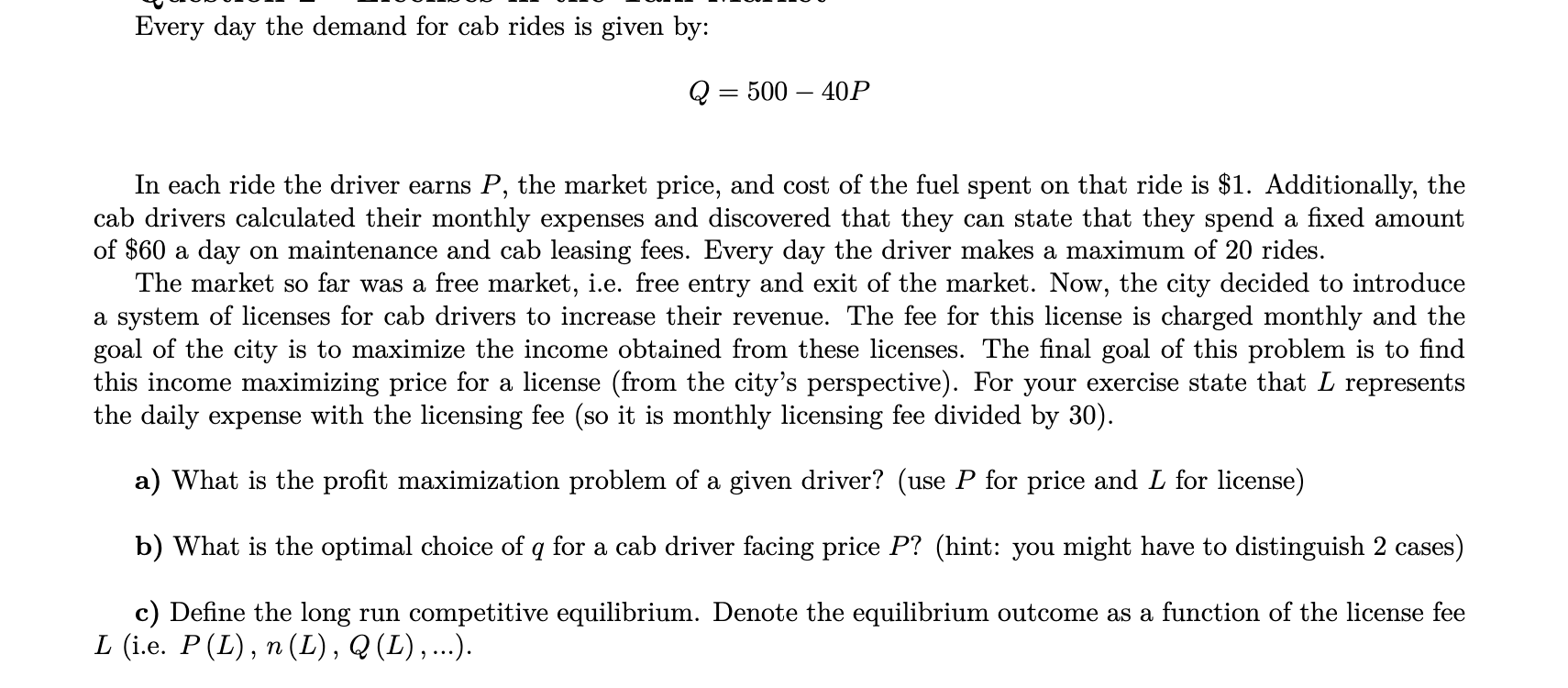Question
Every day the demand for cab rides is given by: Q= 50040P. In each ride the driver earns P, the market price, and cost of
Every day the demand for cab rides is given by:
Q= 50040P.
In each ride the driver earns P, the market price, and cost of the fuel spent on that ride is $1. Additionally, the cab drivers calculated their monthly expenses and discovered that they can state that they spend a fixed amount of $60 a day on maintenance and cab leasing fees. Every day the driver makes a maximum of 20 rides. The market so far was a free market, i.e. free entry and exit of the market. Now, the city decided to introduce a system of licenses for cab drivers to increase their revenue. The fee for this license is charged monthly and the goal of the city is to maximize the income obtained from these licenses. The final goal of this problem is to find this income maximizing price for a license (from the city's perspective). For your exercise state that L represents the daily expense with the licensing fee (so it is monthly licensing fee divided by 30).
a) What is the profit maximization problem of a given driver? (use P for price and L for license)
b) What is the optimal choice of q for a cab driver facing price P ? (hint: you might have to distinguish 2 cases)
c) Define the long run competitive equilibrium. Denote the equilibrium outcome as a function of the license fee L (i.e. P(L), n(L), Q(L), ...).

Step by Step Solution
There are 3 Steps involved in it
Step: 1

Get Instant Access to Expert-Tailored Solutions
See step-by-step solutions with expert insights and AI powered tools for academic success
Step: 2

Step: 3

Ace Your Homework with AI
Get the answers you need in no time with our AI-driven, step-by-step assistance
Get Started


